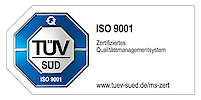Experimental Neurooncology
The central interest of our research group is to understand the molecular mechanisms involved in Glioblastoma (GBM), also referred to as a grade IV astrocytoma, a fast-growing and aggressive brain tumor. GBM is usually characterized by uncontrolled cell proliferation, diffuse infiltration and necrosis tendency. Despite several therapeutic advances, the survival improvement in GBM patients appears to have plateaued, and relapses remain the greatest clinical challenge (Sharma, IJMS 2023). Mounting evidence also suggests that glioblastoma stem-like cells (GSCs) play an important role in tumor growth and response to therapy.
In our lab, we currently pursue the following main research projects:
The role of glucose metabolism in GBM progression
We recently showed that WNT activation plays an important role in promoting the survival of glioblastoma cells under extreme nutrient restrictions (Yusuf, IJMS 2022). By employing a high-throughput in vitro drug screen, we identified LGK974 and berberine as drugs that impair wingless (WNT) signaling and can thereby sensitize GSCs to glucose starvation-induced cell death. In addition, we used Gas chromatography mass spectrometry (GC-MS) to determine WNT-specific alterations of intracellular metabolites in GSCs grown under nutrient restriction. In an independent study, we also revealed the metabolic dependencies of GSCs using high-resolution proton magnetic resonance spectroscopy (1H-NMR). In a defined experimental setting, we stratified in vitro GSC models into different subtypes and used diverse molecular approaches to perform comprehensive analyses in GSC neurosphere cultures and primary GBM samples (Koch, Cancers 2021).
Targeting Wnt/β-catenin signaling for improved therapeutic strategies in GBM
Extensive studies have shown that aberrant Wnt/beta-catenin signaling has a key role in the development of GBM. Also, Wnt/β-catenin pathway is known to be active in GSCs. Considering this, we recently investigated the effect of β-catenin signaling on monocyte migration and potential involvement of CCL2 in β-catenin-dependent cross-talk between monocytes and GBM cells restrictions (Aretz, IJMS 2022). We performed pharmacological targeting of β-catenin with the small molecule inhibitor (Methyl 3-{(4methylphenyl)sulfonylamino}benzoate, MSAB) to evaluate Wnt/β-catenin inhibition and apoptosis-inducing ability in this context. Of interest, in our ongoing studies, we are conducting functional assays on the novel compounds (developed in collaboration with New Zealand partners) that specifically target the Wnt/β-catenin signaling pathway in GBM.
Adoptive T cell based immunotherapy for GBM
We recently discussed how the blood-brain barrier (BBB) hinder the development of effective therapies for GBM, and highlighted the current approaches that are being explored to temporarily open the BBB in order to allow therapeutics in CNS (Sharma, Cell Bioscience 2023). Besides, we proposed that among cancer immunotherapeutic approaches, cytokine-induced killer (CIK) cells therapy and adjuvant NKT immunotherapy with invariant NKT (iNKT) have the ability to improve the clinical scenario of GBM (Li, IJMS 2022). In our ongoing studies, we have now demonstrate that balancing CIK cell cancer immunotherapy with peroxisome proliferator-activated receptor (PPAR) ligands may be a potential therapeutic application for CNS malignancies, in particular GBM (Vordermark, under review). Furthermore, in a preclinical evaluation, we have demonstrated the experimental model based on the cytotoxic ability of dendritic cells in combination with cytokine-induced killer cells (DC-CIKs) as a potentially effective immunotherapy model for investigating treatment options for GBM( Lück, under review).
Underlying distant molecular mechanisms in GBM
In the field of epi-transcriptomics, aberrant N6-methyladenosine (m6A) modification (most prevalent epigenetic modification of mRNA) has recently been implicated in GBM pathobiology. Importantly, evidences also suggests that m6A is associated with Wnt signaling. We therefore systematically analyzed m6A RNA regulators, assessed their correlation with autophagy-related genes, and established and validated lncRNA-dependent prognostic signature for GBM (Sharma, Scientific Reports 2023). This was the first attempt in the literature to systematically predict the potential interaction between the three key determinants (m6A, autophagy, lncRNA) in cancer, particularly in GBM. As a follow-up, we are investigating the potential effects of CIK cell immunotherapy and the synergistic effects of m6a in GBM models. Additionally, we are investigating the overlapping molecular mechanisms involved in the development of cancer (GBM) and neurodegeneration (Sharma, Front Mol Neurosci. 2023, Lu, under review).
Selected publications (last 4 years):
- Sharma A, Guerrero-Cázares H, Maciaczyk J. Editorial to Special Issue "Glioblastoma: Recapitulating the Key Breakthroughs and Future Perspective". Int J Mol Sci. 2023 Jan 29;24(3):2548. doi: 10.3390/ijms24032548.
- Yusuf S, Aretz P, Nickel AC, Westhoff P, Sharma A, Qin N, Remke M, Steiger HJ, Hänggi D, Liu H, Liu H, Neumann S, Reifenberger G, Maciaczyk J. WNT/β-Catenin-Mediated Resistance to Glucose Deprivation in Glioblastoma Stem-like Cells. Cancers (Basel). 2022 Jun 28;14(13):3165. doi: 10.3390/cancers14133165.
- Koch K, Hartmann R, Suwala AK, Rios DH, Kamp MA, Sabel M, Steiger HJ, Willbold D, Sharma A, Kahlert UD, Maciaczyk J. Overexpression of Cystine/Glutamate Antiporter xCT Correlates with Nutrient Flexibility and ZEB1 Expression in Highly Clonogenic Glioblastoma Stem-like Cells (GSCs). Cancers (Basel). 2021 Nov 29;13(23):6001. doi: 10.3390/cancers13236001.
- Aretz P, Maciaczyk D, Yusuf S, Sorg RV, Hänggi D, Liu H, Liu H, Dakal TC, Sharma A, Bethanabatla R, Neumann S, Maciaczyk J. Crosstalk between β-Catenin and CCL2 Drives Migration of Monocytes towards Glioblastoma Cells. Int J Mol Sci. 2022 Apr 20;23(9):4562. doi: 10.3390/ijms23094562.
- Sharma A, Fernandes DC, Reis RL, Gołubczyk D, Neumann S, Lukomska B, Janowski M, Kortylewski M, Walczak P, Oliveira JM, Maciaczyk J. Cutting-edge advances in modeling the blood-brain barrier and tools for its reversible permeabilization for enhanced drug delivery into the brain. Cell Biosci. 2023 Jul 27;13(1):137. doi: 10.1186/s13578-023-01079-3. PMID: 37501215; PMCID: PMC10373415.
- Li Y, Sharma A, Maciaczyk J, Schmidt-Wolf IGH. Recent Development in NKT-Based Immunotherapy of Glioblastoma: From Bench to Bedside. Int J Mol Sci. 2022 Jan 24;23(3):1311. doi: 10.3390/ijms23031311. PMID: 35163235; PMCID: PMC8835986.
- Sharma A, Wang Y, Ge F, Chen P, Dakal TC, Carro MS, Schmidt-Wolf IGH, Maciaczyk J. Systematic integration of m6A regulators and autophagy-related genes in combination with long non-coding RNAs predicts survival in glioblastoma multiforme. Sci Rep. 2023 Oct 11;13(1):17232. doi: 10.1038/s41598-023-44087-6. PMID: 37821547; PMCID: PMC10567764.
- Sharma A, Wüllner U, Schmidt-Wolf IGH, Maciaczyk J. Marginalizing the genomic architecture to identify crosstalk across cancer and neurodegeneration. Front Mol Neurosci. 2023 Feb 27;16:1155177. doi: 10.3389/fnmol.2023.1155177.
Extended list of publications: PubMed
https://pubmed.ncbi.nlm.nih.gov/?term=Maciaczyk&sort=date
Lab Members
Univ.-Prof. Dr. med. Jaroslaw Maciaczyk
Head of research group
e-mail: Enable JavaScript to view protected content.
Dr. Amit Sharma
Senior scientist
e-mail: Enable JavaScript to view protected content.
Students (medical, PhDs)
Annika Simone Lück
Leandros Andreou
Meng yao (Joining soon)
Alumni
Dr. Gregor Bara
Dr. Annalena Stein
Dr. Suad Yusuf
Dr. Philippe Aretz
Dr. Katherina Koch
Collaborations:
Ingo G. H. Schmidt-Wolf, University Hospital Bonn, Germany
Miroslaw Janowski, University of Maryland School of Medicine, USA
Piotr Walczak,University of Maryland School of Medicine, USA
Adrian A Achuthan, University of Melbourne, Australia
Silke Neumann, University of Otago, New Zealand
We are always looking for talented Postdocs, MD/PhD students and Master’s students to join our team. For inquiries about current positions, please contact Enable JavaScript to view protected content. or Enable JavaScript to view protected content.

















